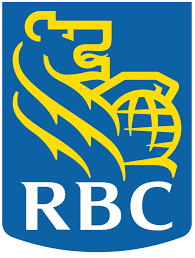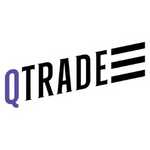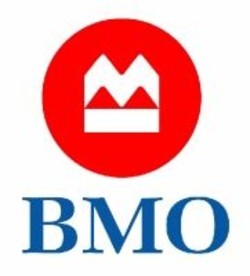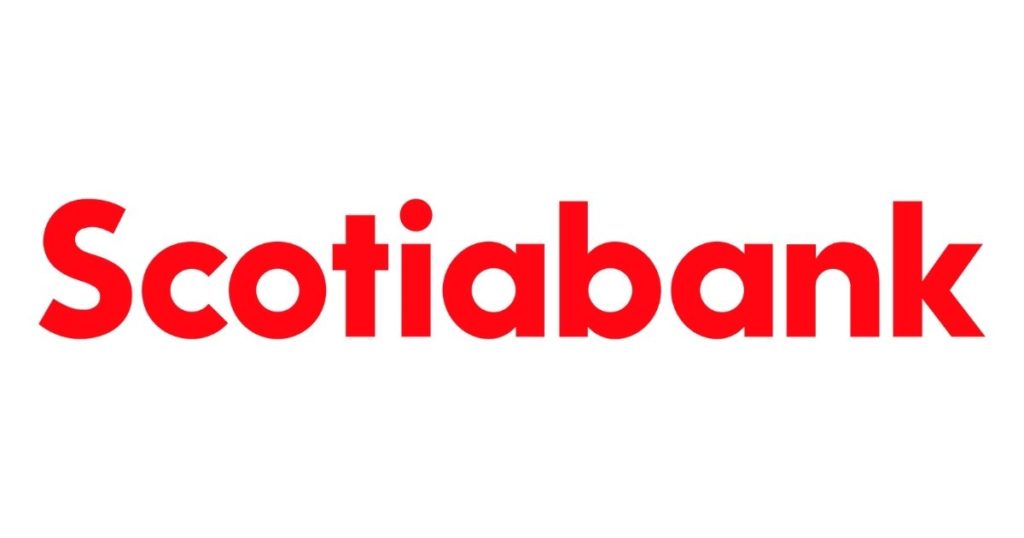Registered Education Savings Plans (RESPs) are not as frequently discussed in the investment world as TFSAs and RRSPs. Despite this, an RESP is an invaluable account type if you have or are planning to have children down the road.
Properly preparing an RESP for your child’s education can allow you to receive up to $7,200 in grants (free money) towards the child’s education. This is through the Canada Education Savings Grant (CESG).
An additional $2,000 in grants can be obtained through the Canada Learning Bond.
To take advantage of these grants, you must plan the opening and funding of the RESP account carefully.
The Three Key Parties Involved In Any RESP

An RESP always has to have three parties involved, according to Canadian law. These three parties are:
- The subscriber
- The promoter
- The beneficiary
The subscriber is the person who sets up the RESP for the child. This can be done on an individual or on a joint basis.
The promoter is the company or institution that is administering the plan. This is typically the company with which you open up your RESP account.
The beneficiary is the child that will benefit from the RESP. They will be using the accumulated funds to pay for their post-secondary education.
RESP Key Features
It is critical to understand that the RESP is simply a registered account type. The performance of the investments within the RESP will determine your overall RESP’s rate of return.
RESPs can’t be compared across promoters as being better or worse. Some financial institutions or brokers do not offer RESPs, generally because RESP accounts tend to be small and more complex to set up.
We will cover the 10 best RESP plan providers in Canada below.
10 Best RESP Plans In Canada
1. Wealthsimple

Wealthsimple is a low-cost discount brokerage in Canada that supports RESPs. They do not have an RESP minimum, so you can open an account with as little as $1. Wealthsimple makes it fairly easy to open new accounts and offers Robo-advising as well as pre-built ESG portfolios.
You will have to work with a low-cost portfolio offered by Wealthsimple as they do not currently offer a self-directed option for RESP accounts.
Wealthsimple’s fees for accounts under $100,000 are 0.50%. This fee drops to 0.40% once the account exceeds $100,000.
2. Questrade

Questrade is another low-cost discount brokerage in Canada and the main competitor to Wealthsimple. Questrade supports RESP accounts but requires a $1,000 minimum deposit for new accounts.
Questrade allows you to manage your own investments with a self-directed RESP account. You can also access pre-created portfolios from Questwealth, Questrade’s robo-advisor platform.
For Questwealth accounts with a balance between $1,000 and $100,000, investors are charged a fee of 0.25%. Accounts with a balance over $100,000 are charged a fee of 0.20%. In addition to this fee, investors also pay the MER of the low-cost ETFs contained in their portfolios.
3. Justwealth

Justwealth focuses on adding target-date portfolios to RESP accounts. Target-date portfolios fit into an RESP account very well because they “mature” at roughly the same time that the RESP funds will be required.
Target-date funds usually have a specific maturity date in their description. As the fund approaches this date over time, the fund’s asset allocation will become more conservative.
Justwealth does not have a self-directed account option or an account minimum.
The fees for Justwealth’s portfolios are 0.50% for accounts under $500,000 and 0.40% for accounts over $500,000. This is in addition to the MER fees of the underlying ETFs in your portfolio.
4. RBC Direct Investing

RBC Direct Investing is RBC’s self-directed discount brokerage arm. For individuals that are already banking with RBC and that want to manage their own RESP investments, this platform may be a great idea.
RBC Direct Investing does not build portfolios for you – you are entirely responsible for the investment mix inside of your RESP. If you are looking to work with an advisor, the bank can put you in touch with one to set up and manage your RESP.
5. Qtrade Direct Investing

Qtrade Direct Investing is a non-bank self-directed discount brokerage, which operates under the parent firm Aviso Wealth. For individuals that are credit union clients and that want to manage their own RESP investments, this platform may be a great idea.
Qtrade Direct Investing does not build portfolios for you – you are entirely responsible for the investment mix inside of your RESP. Various credit unions across the country have advisors that are able to help with the management of your RESP if you are looking for a money manager.
6. CIBC Investor’s Edge

CIBC Investor’s Edge is CIBC’s self-directed discount brokerage. Existing CIBC clients that want to manage their own RESP investments will want to consider this platform.
CIBC Investor’s Edge again does not build portfolios for you – you are entirely responsible for the investment mix inside of your RESP. If you are looking to work with an advisor, the bank can put you in touch with one to set up and manage your RESP.
7. BMO InvestorLine

BMO InvestorLine is BMO’s self-directed discount brokerage. Existing BMO clients that want to manage their own RESP investments will want to consider this platform.
BMO InvestorLine does not build portfolios for you – you are entirely responsible for the investment mix inside of your RESP. If you are looking to work with an advisor, the bank can put you in touch with one to set up and manage your RESP.
8. Scotia iTrade

Scotia iTrade is Scotiabank’s self-directed discount brokerage. For individuals that are already banking with Scotiabank and that want to manage their own RESP investments, this platform may be a great idea.
Scotia iTrade does not build portfolios for you – you are entirely responsible for the investment mix inside of your RESP. If you are looking to work with an advisor, the bank can put you in touch with one to set up and manage your RESP.
9. TD Direct Investing

TD Direct Investing is TD’s self-directed discount brokerage. For individuals that are already banking with TD and that want to manage their own RESP investments, this platform may be a great idea.
TD Direct Investing does not build portfolios for you – you are entirely responsible for the investment mix inside of your RESP. If you are looking to work with an advisor, the bank can put you in touch with one to set up and manage your RESP.
10. CI Direct Investing

The last RESP promoter on our list is CI Direct Investing. CI offers both a robo-advisor as well as self-directed trading for RESP accounts.
The fees for CI’s robo-advisor are 0.60% on the first $150,000. The next $350,000 is charged a 0.40% fee annually. Amounts above $500,000 are charged a fee of 0.35% annually.
Depending on the investments chosen, any fund or strategy MERs will also be charged to your account, in addition to the management fee.
Which Canadian Bank Has The Best RESP?

Investors may question if certain banks or institutions have a superior RESP offer than others. The reality is that the RESP is simply an account type.
The performance of the assets within the RESP will be determined by the underlying funds, stocks, bonds, or other investments.
Especially within the self-directed discount brokerage space, the RESP promoter will provide you only with the RESP framework. You would then be responsible for picking the investments that go within.
In terms of promoters’ robo-advisors, some may perform better than others. Factors such as fees and the time horizon of the particular investment will affect your returns over time.
As a result of this, it is difficult to label one bank or institution as having the best RESP offering.
How Much Does The Average Canadian Have In Their RESP?
Canadians will tend to have more money invested in RESP accounts as the beneficiary of the account ages and approaches the age of post-secondary education.
By the end of 2019, the average RESP balance for children up to four years of age was $5,635. For children aged between five and twelve years old, the average balance increased to $14,327. Subscribers with children between the age of thirteen and seventeen had an average balance of $22,180.
What Is The Best Investment For RESP Accounts?
The investment strategy within an RESP account depends on several factors, which include:
- The time horizon of the investment, or when the child starts post-secondary education in this case
- The importance of the goal
- The availability of outside assets to potentially help fund tuition
- Personal preferences around investments, such as socially responsible investing
Similar to how the target-date fund from Justwealth adjusts its asset allocation as the RESP approaches “maturity,” an identical approach is likely ideal. As the beneficiary matures and approaches the start of post-secondary education, the riskiness of the investments within the account should decrease.
An RESP can hold a variety of investments, including mutual funds, ETFs, Stocks, Bonds, and many more. Your investment strategy should reflect your investment expertise.
More seasoned investors may be in a better position to find good stocks and bonds. Newer investors are more likely to depend on funds and ETFs for the entirety of their RESP.
Newer investors should also strongly consider using a robo-advisor to construct a well-diversified portfolio.
The Three Types of RESP Accounts in Canada

There are three types of RESP accounts that can be opened in Canada.
The individual RESP involves one beneficiary, one subscriber, and one promoter. The subscriber does not have to be the parent of the child for who the RESP is being set up.
A family RESP involves many kids as beneficiaries. The family RESP lets you divide up funds between multiple children, and allows children to get differing amounts if needed.
Group RESP accounts pool assets from various investors to aim for a specific maturity. This approach is intended to allow you to invest alongside others whose children have a similar birth date and targeted education age as your child.
There is a $50,000 lifetime contribution maximum to an RESP per beneficiary.
You can make contributions to an RESP account up to 31 years after opening it. An RESP account has a maximum life of 35 years.
Additional Critical Points Regarding RESP Accounts

There are several things to keep in mind when considering RESP accounts.
The Canadian Education Savings Grant – Grant #1
The first grant offered by the government is the Canadian Education Savings Grant (CESG). This is 20% of the money that you contribute to the RESP account annually, up to a maximum of $500 per year (in most cases). Over the lifetime of the beneficiary, this amount is capped at $7,200.
The Canada Learning Bond – Grant #2
The second grant offered to families with a low or modest income is the Canada Learning Bond. The government pays $500 through the CLB in the first year of eligibility, plus another $100 per year of eligibility (up to and including age 15). The maximum you can receive from the CLB is $2,000.
Tax-Deferred Growth
Another benefit to RESP accounts, aside from the government grants, is the ability to compound money on a tax-deferred basis.
Taxes are paid once money begins to be withdrawn from the account. Until then your investments will compound with no tax implications. This is especially powerful over a longer period of time.
Beneficiaries Who Are 16 or 17 Years Old
The RESP is designed to be an account used for long-term investing. If you have just recently learned about RESP accounts, your child may not be eligible for the CESG if they are 16 or 17 years old.
For an account with a beneficiary that is either 16 or 17 years of age, they will only receive the CESG if:
- A minimum of $2,000 was placed in the child’s RESP before the end of the calendar year in which they turned 15
- A minimum annual contribution of $100 was made throughout at least four years prior to the end of the calendar year in which the child turned 15
The Government of Canada website is an excellent resource for more in-depth information regarding RESP accounts.
Tax Implications of RESP
Here are some key tax implications associated with an RESP:
- Contributions: Contributions to an RESP are made with after-tax dollars, meaning they do not provide a tax deduction for the contributor. The total lifetime contribution limit is $50,000 per child.
- Tax-Deferred Growth: The money in an RESP grows tax-free until it’s withdrawn. This means that any interest, dividends, or capital gains earned within the RESP do not incur tax as long as they remain in the plan.
- Government Grants: Government grants such as the Canada Education Savings Grant (CESG) are not taxed while they remain in the RESP. They can grow tax-free along with the rest of the money in the RESP. However, when funds (including the grants) are withdrawn from the RESP to pay for the beneficiary’s post-secondary education, they are considered taxable income for the student. This includes the CESG and any other grant money.
- Withdrawals (Educational Assistance Payments): When the money is withdrawn to pay for the beneficiary’s post-secondary education, the withdrawal is considered taxable income for the student. However, since many students have little to no income, they often pay little to no tax on these withdrawals. It’s important to note that only the portion of the withdrawal that comes from earnings and government grants is taxable. The contributions portion is not taxable upon withdrawal, as it was made with after-tax dollars.
- Non-Educational Withdrawals: If the child does not pursue post-secondary education and the RESP needs to be collapsed, the original contributions can be withdrawn tax-free. However, the income earned in the plan is subject to tax at your regular income tax rate plus an additional 20%. The grants and bonds contributed by the government must be returned.
- Low-income tax bracket: Typically, students are in a low-income tax bracket, so even though government grants are taxable, students may not end up paying a lot of tax on them.
What are the advantages and disadvantages of An RESP?
Like any financial account, the RESP comes with its own set of advantages and disadvantages.
Advantages of RESP:
- Government Grants: The government contributes to RESPs through the Canada Education Savings Grant (CESG), and possibly other programs, thereby increasing your savings.
- Tax-Deferred Growth: Any income earned within the RESP (interest, dividends, capital gains) grows tax-free until withdrawn.
- Tax-Efficient Withdrawals: When funds are withdrawn for the beneficiary’s education, the money is typically taxed at the student’s income rate, which is usually low.
- Flexibility: Funds from an RESP can be used for a variety of educational expenses, not just tuition. This includes books, living expenses, and equipment.
Disadvantages of RESP:
- Contribution Limits: There’s a lifetime limit of $50,000 per child for RESP contributions. This might limit the growth potential of those who wish to contribute more.
- Taxation on Non-Educational Withdrawals: If the child does not pursue post-secondary education, withdrawing the investment income and grants from the RESP can result in taxes and penalties.
- Grant Repayment: If the funds are not used for the child’s education, any government grants received must be returned.
- Limited Investment Time Frame: Since RESPs are designed for education savings, the investment time frame is generally limited to the years until the child attends post-secondary education. This may limit the potential for long-term growth compared to other investment accounts.
Conclusion

If you have children or are planning to, make sure to consider setting up some type of RESP account. Not only will your investments grow on a tax-deferred basis, but you will also be able to take advantage of substantial grants from the government.
If an RESP account is well set up early on in a child’s life, the hefty cost of post-secondary education can be significantly reduced.
Make sure that your RESP account is part of a comprehensive household financial plan. When putting together a holistic plan, it is critical to consider key elements such as your goals, time horizon, and risk tolerance.





very good & useful article on this subject. Question – if i don’t have any banking relationship, which one will u recommend for setting a family RESP plan? Thank you
Any of the ones in the list will do just fine! Perhaps one of the top 3 picks, which aren’t traditional banks